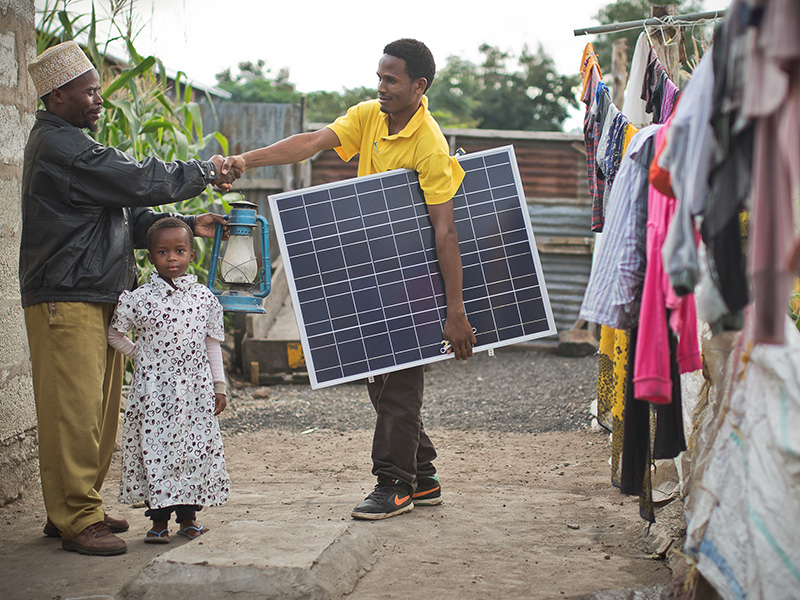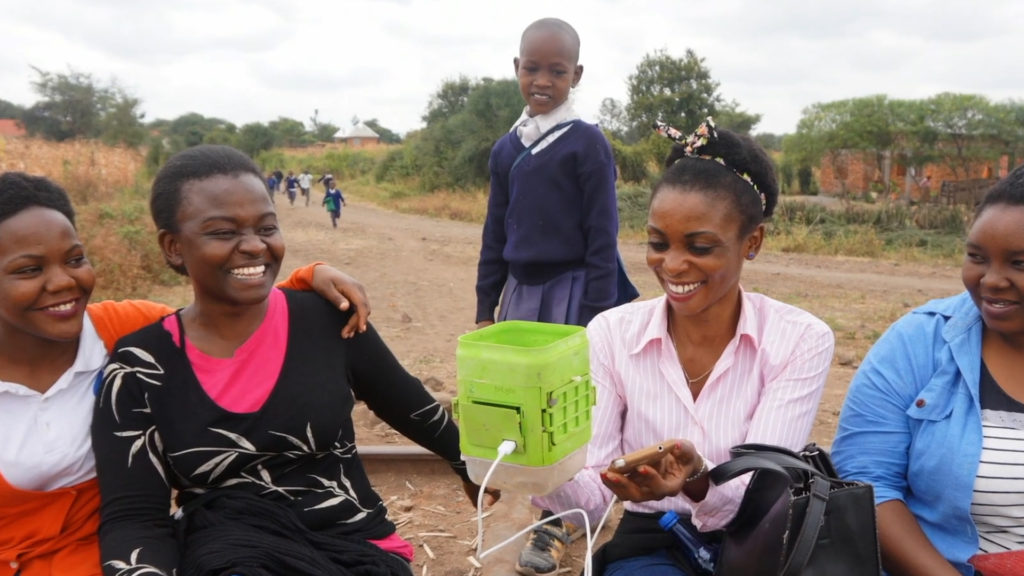How many times a week do you have to charge your phone? Once every two days, every night or even twice a day? For the people of rural Sub-Saharan Africa, charging a phone is only possible when visiting the nearest town. Something as easy as charging a phone requires great time and tremendous energy. This challenge inspired David Lambelet, Briac Barthes and Jonathan Fiorentini to come up with a solution. They developed HiLyte: A clean, safe, affordable and on-demand energy source for these communities. HiLyte is a great example of how different materials can be used in the energy transition.
Cost of Charging a Phone in Sub-Saharan Africa
There are 600 million people living in Sub-Saharan Africa without access to electricity. In order to light their homes, many people resort to the use of kerosene. In fact, 1.2 billion people use kerosene in their daily lives, ultimately subjecting themselves to its life-threatening consequences. It also costs around $0.2 per night, which is a huge cost for rural, impoverished communities. Furthermore, it creates a fire hazard, with the potential of burning a house if it falls to the ground. Kerosene also produces CO2 and black carbon, which threatens users’ lives. Data supplied by the World Bank states that breathing kerosene fumes is almost equal to smoking two packs of cigarettes per day.
Without electricity, people also can’t charge their phones. According to David Lambelet, co-founder of HiLyte, while almost 90% of their target population have phones, only 30% can charge them. This not only hinders communication but also prevents access to online banking and makes it difficult to follow the news. Mobile phones also double as a light source in an environment without lights. For people living in this part of the world, charging their phones often means travelling to the nearest charging station – where it costs around $0.15 per charge. This creates an additional financial burden, and it is not efficient.
Solar Panels: An Alternative Solution
One potential solution for Sub-Saharan Africa is solar energy. As another company aiming to tackle the same problem, ENGIE Mobisol developed solutions using this technology. Focusing on smart off-grid solar solutions, ENGINE Mobisol offers plug and play products and services. Founded in 2011 in Berlin as Mobisol, the company started its first pilot programs in Kenya and Tanzania in 2012. Up until 2018, it developed Mobisol solutions in order to enable customers to have affordable access to its products, ranging from 40W to 200W. In 2019, Mobisol was acquired by the leading energy provider ENGIE. The company also acknowledges the fact that unreliable access to energy hinders economic activity in already under-served rural communities of the region. In this sense, producing reliable and affordable energy solutions, such as solar panels and Mobicharger units that allow multiple users to charge their mobile devices at the same time, is its priority.

Even though sector players like ENGIE Mobisol are aiming for affordability, other solar solutions can be expensive. While solar technologies are supposed to target the population without access to electricity, the price of some products on the market makes it difficult to achieve. For those without access to expensive solar panels, solar lamps can be a solution. Although inexpensive, unfortunately, solar lamps do not work efficiently on cloudy days. To charge those solar lamps, users need to leave them outside, meaning they could be stolen. Plus, solar lamps work with lithium batteries. Once they are empty, and not recycled properly, these batteries pollute the environment. Solar lamps also have a short product life, usually failing to last more than 1.5 years.
The HiLyte Iron Battery
HiLyte offers an innovative solution to the energy problem in this region. Developers in HiLyte use iron as it’s an element that allows for the creation of electricity thanks to its different chemical states. Oxydo-reduction of the iron can then generate electricity. HiLyte took 4 years to deeply research this function of iron and developed a way to use it in the most efficient way possible. The small, easy-to-carry device developed by HiLyte has four small doors. The user inserts a sheet of iron together with a piece of paper inside this door and pours iron salt liquid solution on the top part. As the liquid flows down and comes in contact with the iron it creates a chemical reaction and generates electricity. This energy can turn on a light bulb or charge a phone for five hours.
The solution offered by HiLyte is also environmentally-friendly since iron is the most abundant electrochemical on Earth and it is the only consumable element of the battery. After four or five uses, the iron salt liquid can be disposed of in the ground without any danger. The HiLyte iron battery is also independent of weather conditions. This makes it sustainable and easy to use.

HiLyte is Expanding to New Markets
HiLyte is operating in Tanzania at the moment. It developed the iron battery further with direct user feedback and now looking forward to expanding to Kenya in the near future. It expects to distribute 300,000 devices in the next three years. One of the main hurdles that the company identified was the time that it takes to develop iron batteries. While working on the R&D of this development, the team started to tackle the same market with another product that is based on solar technology, mobile money and an innovative business model. HiLyte is looking forward to making its products accessible for 1 Billion people with no access to reliable electricity and to expand in this $35 Billion market of energy transition.
Sources: HiLyte-Power, Wiwo


